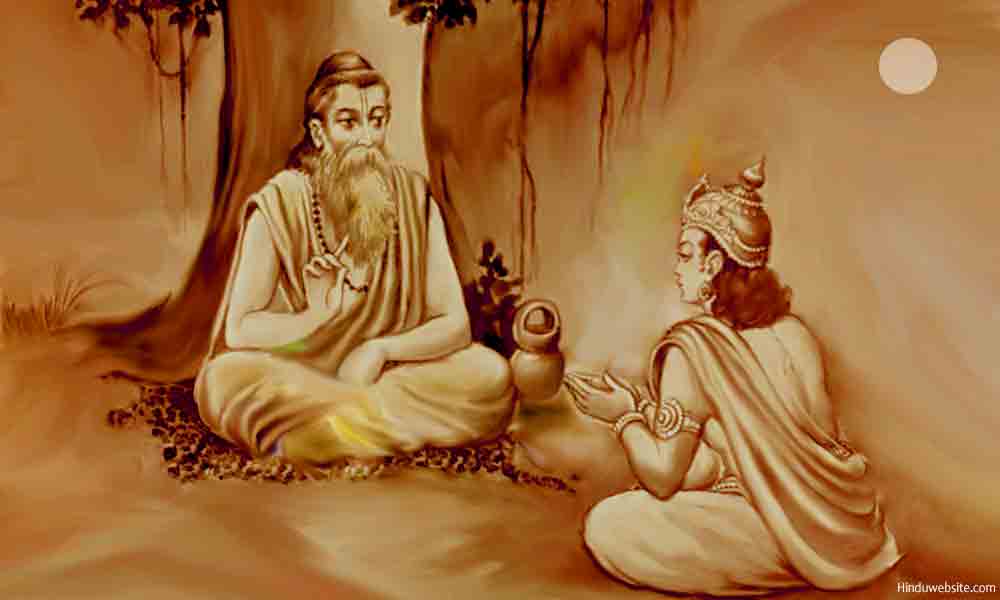
Ashtavakra Samhita Translation and Commentary

Ashtavakra gita presents a rather imaginary conversation or dialogue between an ancient sage named Ashtavakra and a famous historic king named Janaka about the nature of self, reality, self-realization and liberation. It has the same format as the Bhagavadgita, but differs from it in its exclusive focus upon the philosophy, Advaita, rather than presenting a summary of different approaches to liberation.
According to Radhakamal Mukherjee, a noted Indian scholar and historian, it was probably composed in the fourth or fifth century B.C., but we have no proof. Based upon its presentation and exposition of Advaita, it appears that the text might have been composed much later, either before after the works of Adi Shankaracharya. Ashtavakra Gita is more structured and systematic in its presentation of the philosophy with little ambiguity. It is very clear in its description of the Self, the nature of reality and their singularity. Therefore, it does not give much scope to interpret it from the perspective of other schools of philosophy.
The historical Ashtavakra is mentioned in ancient Hindu scriptures such as the Ramayana, the Mahabharata and a few Upanishads. According to the legends, he was born with eight (ashta) deformities (vakras). Hence, the name Ashtavakra. He was said to be a grandson of Uddalaka Aruni, who is mentioned in the earliest Upanishads, but was brought up by him as his own son, along with Svetaketu, who is mentioned in the Chandogya Upanishad. After he grew up, Ashtavakra participated in many public discussions and debates and earned a great acclaim. King Janaka was personally impressed by his knowledge of the Vedas and erudition.
As far as the Ahtavakra Samhita is concerned, the historical Ashtavakra has little to do with the teaching. We have no evidence that the sage practiced nondualism or even proposed it. His name represents scholarship, spirituality, knowledge, and wisdom. The scripture contains 20 chapters and 285 slokas (verses). Of them, Chapter 18 is the largest with 100 sloksas, followed by Chapter 2 with 25. Three chapters contain only four slokas each. This scripture was translated in the past by several eminent scholars. The following original translation is by Jayaram V. It will be presented as a continuing series along with commentary until all chapters are translated.
Suggestions for Further Reading
- Om, Aum, Pranava or Nada in Mantra and Yoga Traditions
- Brahmacharya or Celibacy in Hinduism
- Atheism and Materialism in Ancient India
- Solving the Hindu Caste System
- How To Choose Your Spiritual Guru?
- Creation in Hinduism As a Transformative Evolutionary Process
- Wealth and Duty in Hinduism
- Do You Have Any Plans For Your Rebirth or Reincarnation?
- Understanding Death and Impermanence
- Lessons from the Dance of Kali, the Mother Nature
- Letting your God live in You - The True Essence of the Hindu Way of Life
- prajnanam brahma - Brahman is Intelligence
- Maslow's Hierarchy Of Needs From The Perspective Of Hinduism
- The Definition and Concept of Maya in Hinduism
- The Meaning of Nirvana
- Self-knowledge, Difficulties in Knowing Yourself
- Hinduism - Sex and Gurus
- The Construction of Hinduism
- The Meaning and Significance of Heart in Hinduism
- The Origin and Significance of the Epic Mahabharata
- The True Meaning of Prakriti in Hinduism
- Three Myths about Hinduism
- What is Your Notion of God?
- Why Hinduism is a Preferred Choice for Educated Hindus
- Essays On Dharma
- Esoteric Mystic Hinduism
- Introduction to Hinduism
- Hindu Way of Life
- Essays On Karma
- Hindu Rites and Rituals
- The Origin of The Sanskrit Language
- Symbolism in Hinduism
- Essays on The Upanishads
- Concepts of Hinduism
- Essays on Atman
- Hindu Festivals
- Spiritual Practice
- Right Living
- Yoga of Sorrow
- Happiness
- Mental Health
- Concepts of Buddhism
- General Essays